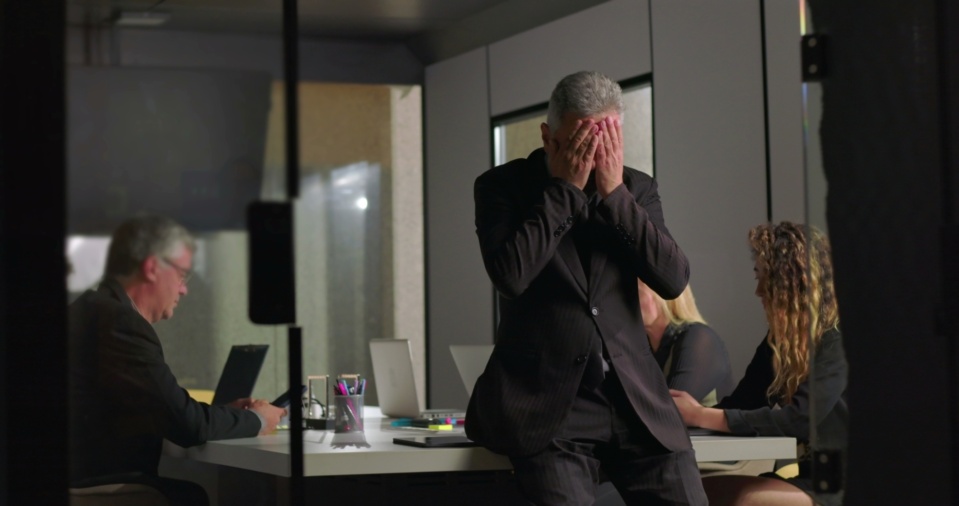
Why meetings can harm employee well-being
Posted on 10 Dec 2025
Anyone working in an organisation knows it: meetings follow one after another at a frantic pace. On…
Posted on 10 Oct 2024
By Matthew Schulz, journalist, Institute of Community Directors Australia

John Travolta famously played the boy in the plastic bubble – a poor, handsome, immune-compromised lad forced to live inside a plastic bubble to separate himself from the world. Seriously – they made a telemovie about it in 1978!
Anyhow, it seems that John was not alone in there.
An array of campaigners from all parts of the social and political spectrum seem to actively avoid exposure to what we might call the real world. This isolation manifests in messaging and media performances that are at best tin-eared and at worst actively offensive. No wonder their campaigns flop.
Campaigns tend to be created by insiders who know all the facts and all the background and are generally convinced of the virtue of their arguments. This is where the disconnect originates, because their audiences have only a tenuous grasp of the facts, know nothing of the background, and are not convinced of anything.

The campaign to ban or severely restrict gambling advertising has gathered huge momentum. The anti-gambling campaigners have several advantages:
No wonder pollsters Redbridge found that 72 per cent of those surveyed supported banning online gambling advertising.
This campaign – which is being driven by many groups including the Alliance for Gambling Reform, the Australian Medical Association and the Grattan Institute – gets it.
The messaging focuses on the risk to kids, the impact on families and, more recently, the links between gambling and family violence. Solid. The solution is easy to understand – even better.

"Remember: the best campaigns aim to win, and winning requires compromise."
Let’s look at the federal Opposition’s push for nuclear energy, which is being opposed by many environmental organisations, most of which I have worked with as media trainer or communications consultant.
Remember: the best campaigns aim to win, and winning requires compromise.
Compromise means being sensitive to people’s current understanding of the issues and catering to their mood. It means talking to them in ways they understand about the angles that matter to them, which may not be that important to you at all.
In multiple media opportunities, anti-nuclear spokespeople have warned us of the perils of a nuclear accident, the impact on local communities, and of course the issue of nuclear waste.
Context is king, so let’s check the top concerns of garden-variety Australians today: the costs of living and housing top the chart, with the economy at number four. Environment ain’t exactly top of mind. So in a time when money really matters, it might be smarter to talk dollars:

We live in a time of high scepticism about governments’ ability to do big things on time and on budget – especially infrastructure. Play to the public’s current emotional state (cynicism) and concerns (cost of living).
And stop using the term “emissions”. Pollution is easier to picture, far more emotive and broader in scope.

It’s lonely at the top. So lonely that nobody told the elites of our university sector that one poll found 69% support for the federal government’s cap on overseas students. (Remember – housing is issue #2 with Australians.)
So, when Group of Eight* top brass, including University of Sydney vice-chancellor Mark Scott, staged a media blitz to challenge the reform, Scott was perhaps unwise to proffer this argument: “International students represent only four per cent of the rental market.”
Four per cent is huge. How huge? The historically low vacancy rate that underpins our current rental crisis is 1.3%. But Scott thought this message should placate pesky renters as they queue in the rain to view another one-bedroom delight. It did not.
Then Scott said – I kid you not – that the public has no reason to complain because the accommodation universities build is exclusively for oversees students – not Australian residents. (Note that this was supposed to make us feel better and oppose the student caps.)
In a time of scarce homes, scare prime land and scarcer construction workers, universities are creating homes exclusively for other people. Can’t wait until they start doing the same thing with hospitals and childcare centres.
One must be living in an elite bubble** indeed to think that these arguments are persuasive, but heck, what do I know? I went to TAFE. Pro-tip: try to not sound self-interested.
Election denier Donald Trump taps into his supporters’ moods uncannily well. They are angry, sick of being told what to do, and feeling aggrieved with a globalised, woke world.
Likewise the Every Australian Counts campaign, which campaigned for the introduction of the National Disability Insurance Scheme, tapped into the roiling anger of the disability community back in 2011. They could have played it nice. They could have played it sad. Instead, they were challenging, angry and aggrieved. They tapped into the mood and were not to be messed with.
There are lots of reasons why campaigns fail – lack of resources, disengaged communities or the timidity of decision-makers. Some of that is beyond our control. Messaging is utterly within our control. Be bold, be distinctive and, above all, be empathetic to your audience.
Now go stream The Boy in the Plastic Bubble and thank me later.
____________
*Nothing says Elite Bubble better than describing your peak body for universities as the Group of Eight.
**How elite are they? The majority of vice-chancellors in Victoria earn over $1 million annually.
Brett de Hoedt is the mayor of Hootville Communications, which assists not-for-profits with media, marketing and communications. Read more of Brett’s work here.
Campaigning and advocacy help sheets: Working with the media | Advocacy and government | Advocacy for legislation and regulation | The boundaries of advocacy work | Getting starting in advocacy | Campaign collaboration | Advocacy ‘circles’
More great guidance: The golden rules of campaigning | Unlocking the doors to the corridors of power | The inside story of the Voices for Indi movement | How a cause day can help your NFP | Ten questions every board director needs to ask about marketing | Five tips for getting media coverage | Working with celebrities and VIPs | Communication helpsheets

Posted on 10 Dec 2025
Anyone working in an organisation knows it: meetings follow one after another at a frantic pace. On…

Posted on 10 Dec 2025
As a qualified yoga instructor who learned the practice in her hometown of Mumbai, Ruhee Meghani…

Posted on 10 Dec 2025
Community Directors trainer Jon Staley knows from first-hand experience the cost of ignoring…

Posted on 10 Dec 2025
Stressed, overwhelmed, exhausted… if you’re on a not-for-profit board and these words sound…

Posted on 10 Dec 2025
The Institute of Community Directors Australia trains over 22,000 people each year, which gives us…

Posted on 03 Dec 2025
Many not-for-profit (NFP) board members in Australia are burnt out, overwhelmed and considering…

Posted on 26 Nov 2025
A roll call of Victoria’s brightest future leaders has graduated from a testing and inspiring…

Posted on 12 Nov 2025
At the Institute of Community Directors Australia, we believe that stronger communities make a…

Posted on 12 Nov 2025
Like many Community Directors members, Hazel Westbury is a community leader who isn’t easily…

Posted on 11 Nov 2025
I’ve seen what happens when fear of conflict wins out over taking a principled stand.

Posted on 11 Nov 2025
‘It’s not a question of enough, pal. It’s a zero-sum game. Somebody wins and somebody loses’.

Posted on 11 Nov 2025
Progressive economic Richard Denniss believes the constant hunt by governments for the political…